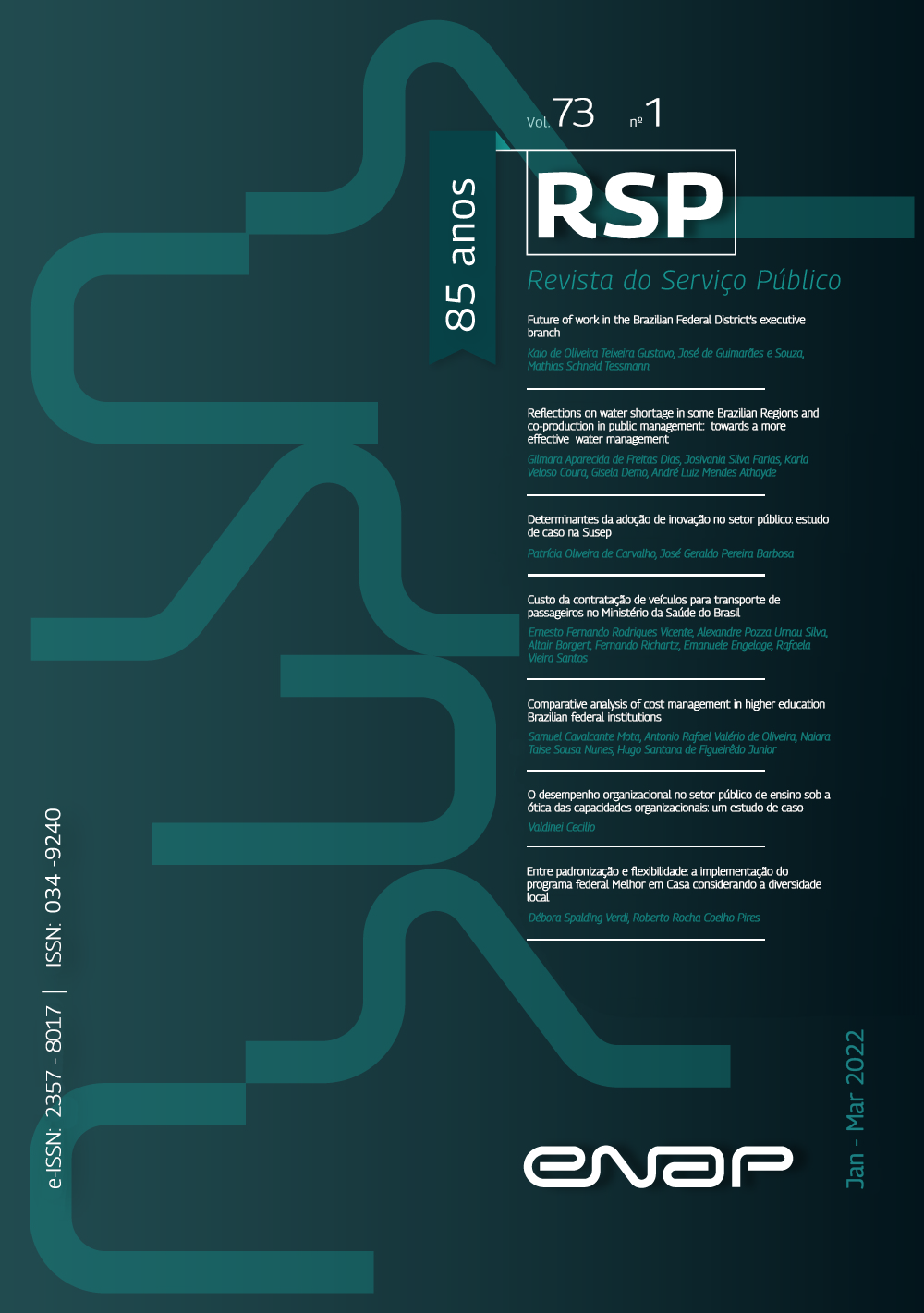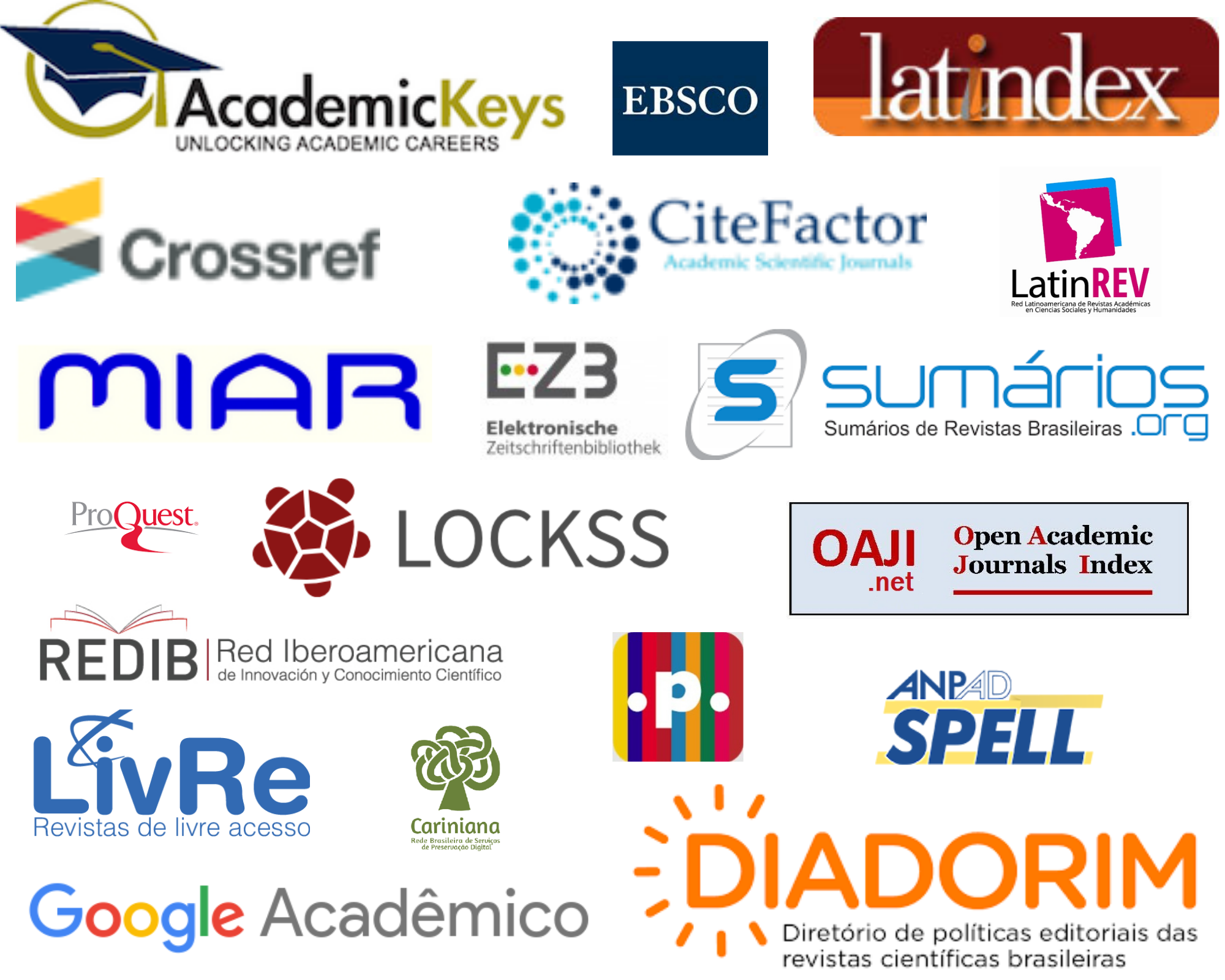O futuro do trabalho no Poder Executivo do Distrito Federal brasileiro
Palavras-chave:
futuro do trabalho, automação, aprendizado de máquina, setor público, Governo do Distrito FederalResumo
No presente artigo abordamos o tema Futuro do Trabalho com foco no Setor Público do Distrito Federal (DF). O Brasil é uma república federativa e o DF, sede dos poderes executivo, legislativo e judiciário federais, tem o oitavo maior PIB entre as 27 unidades federativas, e o maior PIB per capita, quase o dobro do 2º colocado, justificando a importância de analisar sua estrutura governamental. Para tanto, reproduzimos a metodologia de Kubota and Maciente (2019) de estimação da propensão de automação das ocupações, aplicando à base de dados de ocupação dos servidores do Executivo do Distrito Federal. Os resultados apontam que os cargos que necessitam de menores níveis de escolaridade e envolvem tarefas mais rotineiras tendem a uma maior propensão de automação. Por fim, com base em nossos resultados, fazemos uma análise da estatística descritiva da escolaridade, idade e remuneração dos cargos públicos do Executivo do Distrito Federal.
Downloads
Referências
ACEMOGLU, D.; RESTREPO, P. (2018). "The Race between Man and Machine: Implications of Technology for Growth, Factor Shares, and Employment." American Economic Review, 108 (6): 1488-1542.
ADAMCZYK, B. W.; MONASTERIO, L.; FOCHEZATTO, A. (2020). Impacto da Automação no Futuro do Emprego do Setor Público: uma aplicação ao Executivo Federal brasileiro. IPEA Working Papers, 3456.
AGRAWAL, A., GANS, J e GOLDFARB A. (2019). "Artificial Intelligence: The Ambiguous Labor Market Impact of Automating Prediction." Journal of Economic Perspectives, 33 (2): 31-50.
ALBUQUERQUE, P. H. M., SAAVEDRA, C.A.P.B., MORAIS, R.L., ALVES, P.F. e YAOHAO, P. (2019). “Na era das máquinas, o emprego é de quem? Estimação da probabilidade de automação de ocupações no Brasil.” Brasília: Ipea, Texto para Discussão, n. 2457.
ARBACHE, J. (2012) “Is Brazilian manufacturing losing its drive?” Mimeografado. Disponível em: http://papers.ssrn.com/sol3/papers.cfm?abstract_id=2150684 Brasília: UnB, acesso em 4/2020.
ARNTZ, M., T. Gregory e U. Zierahn (2016), "O Risco de Automação para Empregos nos Países da OCDE: Uma Análise Comparativa", Documentos de Trabalho da OCDE sobre Social, Emprego e Migração, Nº. 189, OECD Publishing, Paris, https://doi.org/10.1787/5jlz9h56dvq7-en, acesso em 7/2020.
BESSEN, J. E. (2015). Learning by Doing: The Real Connection Between Innovation, Wages, and Wealth, Yale University Press.
BRYNJOLFSSON, E., MITCHELL, T. e ROCK, D. (2018). "What Can Machines Learn, and What Does It Mean for Occupations and the Economy?" AEA Papers and Proceedings, 108: 43-47.
BRYNJOLFSSON, E.; MCAFEE, A. (2014). “The second machine age: work, progress, and prosperity in a time of brilliant technologies.” New York: W.W. Norton and Company, 2014.
CAMERON, E.; HAWKSW (2018) “AI will create as many Jobs as id displaces by boosting economic growth” https://www.pwc.co.uk/press-room/press-releases/AI-will-create-as-many-jobs-as-it-displaces-by-boosting-economic-growth.html, acesso em 7/2020.
CODEPLAN http://infodf.codeplan.df.gov.br/?page_id=2254
DATHEIN, R. (2003). “Inovação e Revoluções Industriais: uma apresentação das mudanças tecnológicas determinantes nos séculos XVIII e XIX.” Publicações DECON Textos Didáticos 02/2003. DECON/UFRGS, Porto Alegre. http://www.ufrgs.br/decon/
DAVID, H. (2015). “Why Are There Still So Many Jobs? The History and Future of Workplace Automation”, Journal of Economic Perspectives—Volume 29, Number 3—Pages 3–30
DVORKIN, M. (2016). Jobs involving routine tasks aren’t growing. Saint Louis; On the Economy
Blog.
FREEMAN, R., GANGULI, I.; HANDEL, M. (2020). “Within-Occupation Changes Dominate Changes in What Workers Do: A Shift-Share Decomposition, 2005–2015”, AEA Papers and Proceedings, 110: 394–399, https://doi.org/10.1257/pandp.20201005.
FREY, C. B.; OSBORNE, M. A. (2017). “The future of employment: how susceptible are jobs to computerisation? Technological Forecasting and Social Change”.
HIDALGO, C.; HAUSMANN, R. (2009). “The building blocks of economic complexity”. Proceedings of the National Academy of Sciences of the United States of America, vol. 106, n. 26, p. 10570–10575.
HOBSBAWM, E. A era das revoluções. 1789-1848.
KAUFMANN, A.; TÖDTLING, F. (2000). “Systems of innovation in traditional industrial regions: the case of Styria in a comparative perspective” Regional Studies, v. 34, n. 1, p. 29-40.
KEYNES, J. M. (1971). A tract on monetary reform. London: Macmillan. (The Collected Writings of John Maynard Keynes, v. IV).
KOVACS, I. (2015). “Os avanços tecnológicos e o futuro do trabalho: debates recentes”. See discussions, stats, and author profiles for this publication at: https://www.researchgate.net/publication/304040159.
KUBOTA, C. L.; MACIENTE, N. A. (2019). Propensão à automação das tarefas ocupacionais no Brasil, disponível em: https://www.ipea.gov.br/portal/images/stories/PDFs/radar/191213_radar_61_art4.pdf, acesso em 4/2020.
MANSFIELD, E. (1988). “The speed and cost of industrial innovation in Japan and the United States: external vs. internal technology”. Management Science, v. 34, n. 10, p. 1157-1168.
MANYIKA, J., CHUI, M., MIREMADI, M., BUGHIN, J., GEORGE, K., WILLMOTT, P.; DEWHURST, M. (2017). A Future That Works: Automation, Employment and Productivity. Chicago: McKinsey Global Institute.
POULIAKAS, K. (2018). “Determinants of Automation Risk in the EU Labour Market: A Skills-Needs Approach”, Cedefop, University of Aberdeen Business School and IZA.
PRETTNER, K.; STRULIK. “Innovation, automation, and inequality: Policy challenges in the race against the machine”. Journal of Monetary Economics, https://doi.org/10.1016/j.jmoneco.2019.10.012, acesso em 7/2020.
RIFKIN, J. (2012). The Third Industrial Revolution.
ROBERTS, C.; LAWRENCE, M.; KING, L. (2017). “Managing automation: Employment, inequality and ethics in the digital age”. IPPR. http://www.ippr.org/publications/managing-automation, acesso em 5/2020.
SCHWAB, K.; DAVIS, N. (2018). Aplicando a Quarta Revolução Industrial.
SILVA, M., MAINARDES, E., RAPOSO, M.; SOUSA, G. (2011) “Determinantes Internos e Externos da Capacidade Inovadora das Empresas de Serviços Portuguesas: Modelo Logit”.
SORGNER, A. (2017). Jobs at Risk! Effects of Automation of Jobs on Occupational Mobility. http://hdl.handle.net/10419/168088, acesso em 5/2020.
TEPASSÊ, A.; FERNANDES, R. (2018). O futuro do trabalho no comércio.
Downloads
Publicado
Como Citar
Edição
Seção
Licença
Copyright (c) 2022 Revista do Serviço Público

Este trabalho está licenciado sob uma licença Creative Commons Attribution-NonCommercial-ShareAlike 4.0 International License.
- A RSP adota a licença Creative Commons (CC) do tipo Atribuição – Uso Não-Comercial (BY-NC).
- A licença permite que outros remixem, adaptem e criem obra licenciada, sendo proibido o uso com fins comerciais.
- As novas obras devem fazer referência ao autor nos créditos e não podem ser usadas com fins comerciais, porém não precisam ser licenciadas sob os mesmos termos dessa licença.
- Ao publicar o artigo na RSP, o autor cede e transfere para a ENAP os direitos autorais patrimoniais referentes ao artigo.
- O artigo publicado na RSP não poderá ser divulgado em outro meio sem a devida referência à publicação de origem.
- O autor que tiver o artigo publicado na RSP deverá assinar o Termo de Concessão de Direitos Autorais (em momento oportuno a editoria da Revista entrará em contato com o autor para assinatura do Termo).



